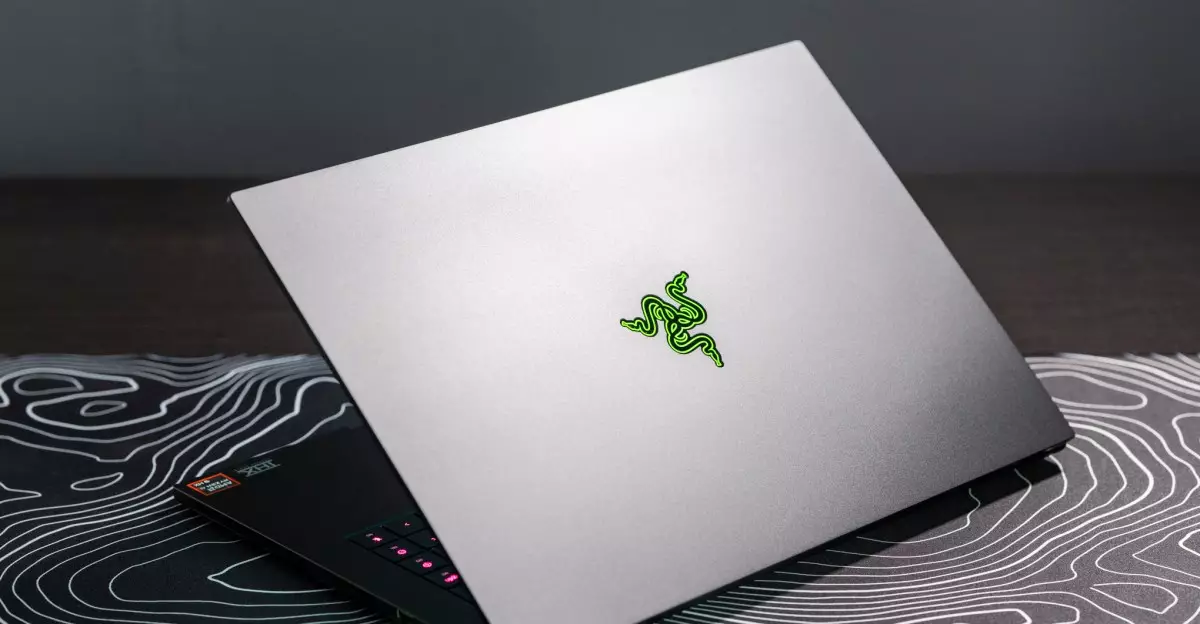The Razer Blade 16 has hit the market with a fervor that demands attention, especially for avid gamers who also pursue creative tasks. Positioned as a competitor to the renowned MacBook Pro, this gaming laptop offers elegance alongside robust gaming performance. However, beneath the slim and sleek chassis lie a few quirks that require scrutiny. This article examines the features and drawbacks of the Razer Blade 16 while providing insights based on hands-on experience.
A Design That Dazzles
Visually, the Razer Blade 16 is a sight to behold. It returns to a thinner and lighter chassis, which is a significant improvement over its predecessor. The reduction of 7mm in thickness and 0.8 pounds in weight enhances portability, making it a convenient choice for users who may need to travel frequently. The laptop remains remarkably stylish, embodying the aesthetics expected from a premium gaming device.
Beyond cosmetic appeal, the display stands out with its 16-inch OLED panel, boasting a 2560 x 1600 resolution and a refresh rate of 240Hz. This combination is especially beneficial for gamers and creators, allowing them to enjoy vibrant colors and buttery-smooth motion. However, while Razer has made strides in design, there persists a questionable decision regarding the new column of macro keys. This addition can lead to accidental commands, revealing a lapse in intuitive design that could have easily been solved with a more familiar keyboard layout.
Performance and Experiences: A Love-Hate Relationship
At the heart of the Razer Blade 16 is the Nvidia RTX 5090 GPU—an upgrade that promises substantial performance strides, especially with features like DLSS and frame generation. Initial impressions suggest a solid performance boost, making demanding tasks more manageable. Yet, amid these high expectations, the experience has been marred by technical issues.
My initial review unit demonstrated significant hardware faults, leading to a necessary replacement. While the newly acquired unit has addressed many of those initial problems, new ones persist, including random bluescreens. This inconsistency raises red flags about reliability, especially for enthusiasts who require utmost stability during critical gaming sessions or creative workflows.
Gaming performance has its merits—with smooth graphics rendering and remarkable visuals that make gameplay exciting. However, the laptop struggles when it comes to battery life in productivity settings. A robust gaming laptop should ideally transition seamlessly into a work machine, yet the Blade 16 falters here. Testing yields disappointing results as I experience a meager five hours of battery life, even when utilizing integrated graphics and light productivity applications. Such performance poses a dilemma for users who expect their laptop to excel in both gaming and professional settings.
Value for Money: A Questionable Investment
The Blade 16 arrives with a staggering price tag of $4,499.99 for the top configuration. On one hand, the allure of an all-in-one device capable of handling gaming, content creation, and everyday tasks is appealing. Still, one cannot overlook the fact that for the same price, one could acquire a capable MacBook Pro and an additional gaming laptop, or even a budget-friendly desktop. The crux of the issue lies in whether users deem the premium justified, especially when the laptop exhibits inconsistent performance under less demanding conditions.
Furthermore, the proprietary accessories—like the Razer Laptop Cooling Pad, which promises additional performance power—introduce an added cost. While it may enhance cooling and performance during heavy loads, users must question whether it’s worth the noise and $150 price tag in addition to an already premium laptop.
The Ongoing Journey of Testing
As I continue to test the Razer Blade 16, the experience remains a blend of admiration and frustration. The design is undoubtedly refined; gaming visual fidelity is unmatched, and its ability to operate at peak levels under strenuous conditions cannot be understated. However, reliability issues cast a cloud over my experience. Perhaps there’s an underlying configuration issue that, once resolved, could elevate the Blade 16’s overall performance.
For now, Razer must improve their quality control and support, as buyers at this price point expect perfection. As I navigate through prolonged testing, the primary takeaway is that the potential of the Blade 16 is untapped—it’s undoubtedly a masterpiece in the making, yet unresolved issues linger just beneath the surface. Would I recommend it based solely on what I’ve seen? It’s a complicated response that depends largely on how forthcoming Razer is in addressing these challenges moving forward. The Blade 16’s charm and capability can’t be ignored, yet it demands caution from prospective buyers.


Leave a Reply